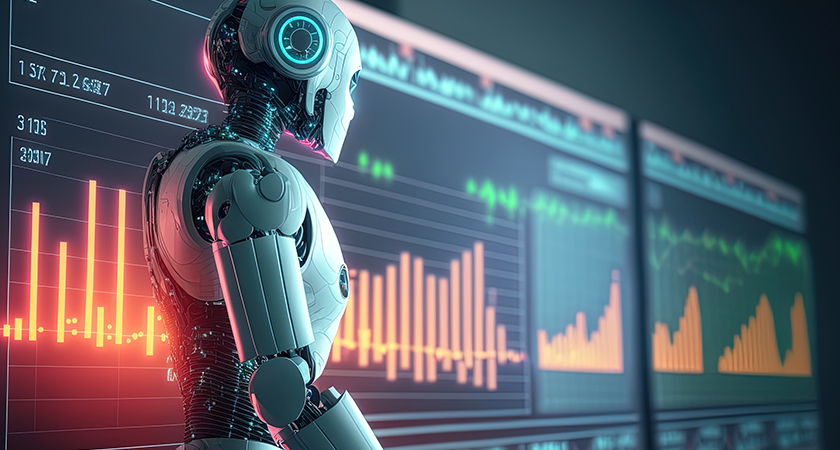
AI vs Machine Learning: Which is Right for You?
Artificial Intelligence (AI) and Machine Learning (ML) are the two buzzwords that have been creating a stir in the tech industry for quite some time now. Both these fields are rapidly evolving and many people use them interchangeably, but they do have distinct differences. In this blog, we will explore what AI and ML are, how they intersect with each other, and how they differ in their approach. We will also discuss real-world implementations of these technologies across various industries such as healthcare, e-commerce, and retail. Lastly, we will look into the future trends in AI and ML and how these technologies will reshape our world. So buckle up and get ready to dive deep into the world of AI and ML!
Defining Artificial Intelligence
Artificial intelligence involves mimicking human reasoning and encompasses complex tasks, decision making, and operational efficiency. It is an umbrella term covering machine learning, deep learning, and more, utilized in healthcare, cybersecurity, automation, reasoning, and analytics, using intelligent systems, predictive analytics, and accurate results.
Understanding the Scope of AI
AI encompasses a wide array of applications, including speech recognition and robotics. It involves data analysis, statistical models, and reasoning algorithms. AI impacts supply chains, customer service, and browsing algorithms, and includes machine learning models and object recognition. Additionally, AI influences social media, developer credentials, network policy, and IP address.
Key Principles of AI
AI operates using artificial neural networks, algorithm sequences, and extensive data. It encompasses natural language processing, new data, and network policies. AI involves human cognition, reasoning, and cognitive functions. It comprises subsets of AI, data scientists, machine learning subsets, and deep learning, incorporating ML technology and data points.
Exploring Machine Learning
Machine learning, a subset of AI, focuses on specific tasks using algorithms and data points. It encompasses predictive analytics, statistical models, and automation, influencing health care, cybersecurity, and reasoning. ML technology plays a pivotal role in decision-making, offering accurate results for diverse applications without redundancies or repetition.
The Core Concept of ML
Machine learning utilizes algorithms, data points, and statistical models for predictive analytics and precise outcomes. It encompasses specific tasks, data analysis, decision-making, and influences health care, cybersecurity, and human reasoning within the field of AI. ML covers a range of algorithms and new information, mirroring human brain functioning.
Types of Machine Learning Algorithms
Machine learning encompasses supervised, unsupervised, and reinforcement learning. It involves decision trees, k-means clustering, and linear regression models, influencing neural networks, deep learning, and NLP. ML algorithms also entail computer vision, object recognition, speech recognition, big data, social media, and browsing algorithms.
The Intersection of AI and Machine Learning
AI and machine learning converge in tackling complex tasks and data analysis, impacting health care, cybersecurity, and reasoning. Their synergy enables decision making, predictive analytics, and automation, influencing supply chains, customer service, and browsing algorithms. The intersection encompasses machine learning models, social media, and network policy.
Shared Goals and Objectives
AI and machine learning strive for precise outcomes, streamlined operations, and automation. They tackle specific tasks, data analysis, and decision-making processes. Their impact extends to health care, cybersecurity, reasoning, and various other fields of AI. Moreover, they influence supply chains, customer service, browsing algorithms, and developer credentials, encompassing machine learning models and network policy.
How AI and ML Complement Each Other
AI and machine learning work together seamlessly in reasoning, predictive analytics, and automation. They handle specific tasks, data analysis, and decision making within the field of AI and computer science. Their influence extends to health care, cybersecurity, reasoning, and umbrella term applications. Additionally, they impact supply chains, customer service, browsing algorithms, and developer credentials, thus reinforcing their complementarity
Distinguishing Between AI and Machine Learning
AI differs from machine learning in scope, with AI encompassing cognitive functions, influencing reasoning, big data, and human cognitive functions, while machine learning emphasizes data analysis and predictive analytics. AI is an umbrella term, while machine learning is a subset focusing on specific tasks, statistical models, data points, and algorithms.
Fundamental Differences in Approach
In the field of AI, the focus is on simulating human intelligence, while ML emphasizes learning from data. Both utilize algorithms for decision-making where ML models improve performance over time, whereas AI systems aim to mimic human cognitive functions, making them suitable for specific tasks.
Comparing Applications and Use Cases
AI applications encompass tasks such as speech recognition, computer vision, and natural language processing, while ML is applied in predictive analytics, statistical models, and automation of tasks. AI tackles complex human reasoning and decision-making, whereas ML focuses on data analysis and operational efficiency, serving diverse industry needs.
Real-World Implementations of AI and ML
Real-world applications of AI encompass customer service automation, cybersecurity, and healthcare diagnostics. Meanwhile, ML is integrated into recommendation systems, supply chain optimization, and predictive maintenance. Both AI and ML contribute to operational efficiency and automation across various domains, showcasing their impact.
AI and ML in Healthcare
The healthcare industry undergoes transformation through AI’s predictive analytics and ML’s data analysis. Automation, intelligent diagnostics, and robotics optimize patient care and operational efficiency. This integration enhances diagnostic accuracy and revolutionizes healthcare delivery.
Impact of AI and ML on Business Operations
AI and ML significantly impact business operations by automating processes, enhancing efficiency, and enabling advanced data analysis. Businesses harness AI for supply chain optimization, decision-making, and predictive analytics. Meanwhile, ML models facilitate data analysis, predictive maintenance, and task automation, leading to improved decision-making, cost savings, and streamlined customer service.
The Role of AI and ML in E-commerce and Retail
AI and ML revolutionize e-commerce through personalized recommendations, customer service automation, and predictive analytics. These technologies enable data analysis, predictive modeling, and customer behavior analysis, contributing to operational efficiency and the automation of tasks. Additionally, AI and ML enhance customer experience, optimize supply chains, and improve decision-making in retail, leading to better customer service and task automation.
Foreseeing the Future Trends in AI and ML
The future trends for AI and ML encompass progression in human intervention, reasoning, and intelligent systems. ML is set to advance in predictive analytics, reasoning, and complex task automation. Both AI and ML are expected to impact browsing, decision making, and object recognition, pointing toward continuous evolution, expansion, and intelligent automation.
Predicted Advancements in AI
Predicted advancements in the field of AI will center on enhancing human cognitive functions, machine learning models, and intelligent systems. This evolution is expected to improve reasoning, decision making, and predictive analytics. Furthermore, advancements in natural language processing, speech recognition, and object recognition are anticipated, leading to increased operational efficiency and automation of tasks.
Expected Evolution of ML Techniques
The future evolution of ML techniques will center on robotics, default, and machine learning models, enhancing reasoning, predictive analytics, and decision-making. It indicates advancements in computer vision, speech recognition, and predictive analytics, leading to increased operational efficiency, task automation, and intelligent reasoning.
Implications for Industries and Professions
The impact of AI and ML on industries extends to operational efficiency, task automation, and intelligent decision-making. These technologies have implications for healthcare, cybersecurity, and e-commerce, affecting customer service, data analysis, and task automation. Furthermore, they enhance decision-making, predictive analytics, and customer service automation within professions, signaling continued evolution and intelligent reasoning.
How Will AI and ML Reshape Our World?
AI and machine learning are set to reshape our world by revolutionizing industries like healthcare, cybersecurity, and operational efficiency. With ML’s ability to provide accurate results through statistical models and predictive analytics, and AI’s automation and intelligent systems transforming decision making, the future holds exciting possibilities.
Conclusion
To conclude, both AI and machine learning play significant roles in shaping our present and future. While AI focuses on creating intelligent machines that can mimic human behavior, machine learning is a subset of AI that enables machines to learn from data and improve their performance without explicit programming. The intersection of AI and machine learning is where the true power lies, as they complement each other and work towards shared goals and objectives. As we move forward, we can expect advancements in AI and the evolution of ML techniques, leading to transformative changes across industries and professions. The impact of AI and ML can already be seen in healthcare, business operations, e-commerce, and retail, with endless possibilities for their implementation in the future. It’s an exciting time to witness how AI and ML will reshape our world and drive innovation to new heights.
If you have any further questions or need assistance, feel free to reach out to us at [email protected]









